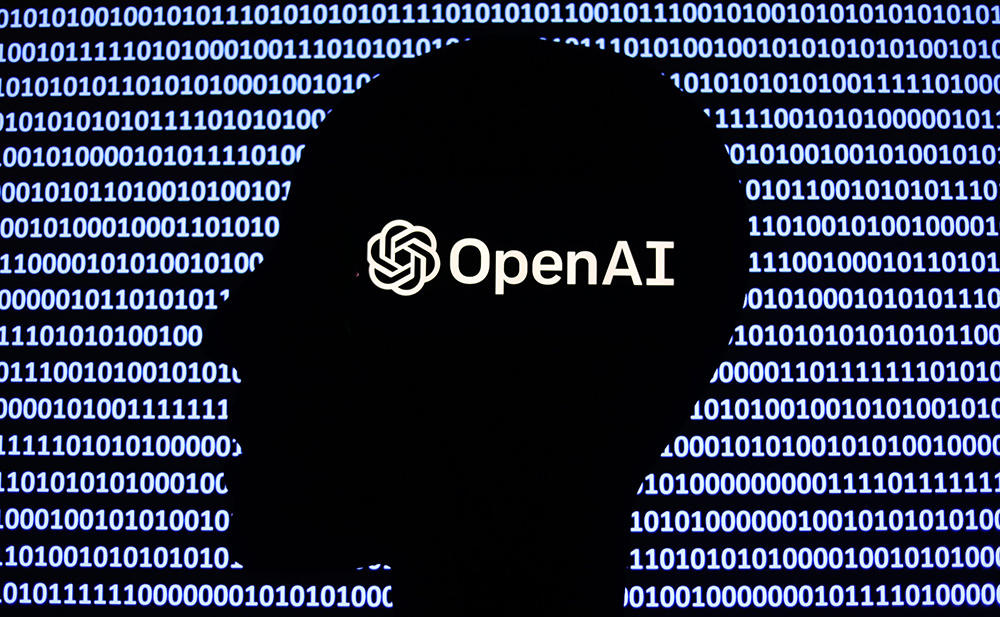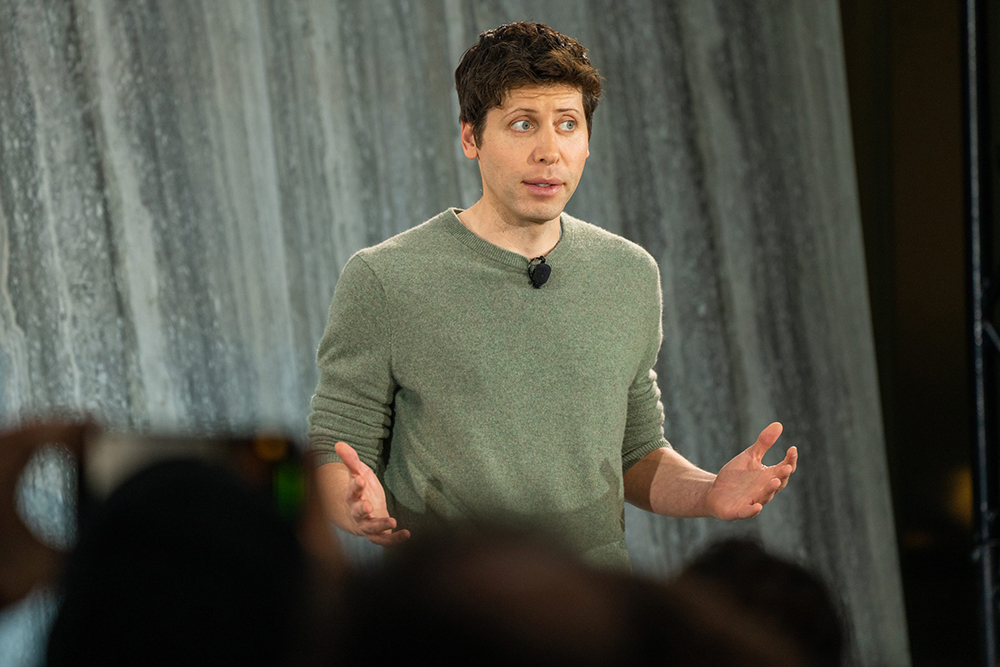
GPT-4终于亮相了。这是OpenAI的最新版人工智能系统,堪称史上最强大的人工智能系统,也是广受欢迎的ChatGPT的人工智能模型的继任者。
位于美国旧金山的人工智能实验室OpenAI现在与微软(Microsoft)开展密切合作,该实验室称,GPT-4比支持消费者版本ChatGPT的GPT-3.5模型更强大。首先,GPT-4是多模态的:尽管它只生成文本,但它可以接收图像和文本。这有助于提升人工智能模型“理解”照片和场景的能力。(尽管目前提供这种视觉理解功能仅依靠OpenAI与Be My Eyes的合作,后者是一款面向视障人士的免费移动应用程序。)
在一系列自然语言处理和计算机视觉算法的基准测试中,新模型的表现比GPT-3.5要好得多。它在一系列原本为人类设计的考试评估中也表现得相当出色,包括在模拟律师资格考试中取得了非常优异的成绩,而且还在从数学到艺术史的一系列大学先修考试中取得了满分(满分是5分)。(有趣的是,该系统在大学先修课程英语文学和英语作文考试中得分都很低,机器学习专家已经提出疑问,即GPT-4在考试中的出色表现是否可能不如表面上看起来那么惊艳。)
根据OpenAI的说法,该模型针对提问返回基于事实的答案的可能性增加了40%,尽管在某些情况下,它仍然可能编造信息,人工智能研究人员称之为“幻觉”。它也不太可能跳过OpenAI为该模型设置的护栏,这些护栏是为了防止它输出有毒或有偏见的言论,或建议用户采取可能造成伤害的行动。OpenAI表示,GPT-4比GPT-3.5更有可能拒绝此类请求。
尽管如此,GPT-4仍然有许多与其他大型语言模型相同的潜在风险和缺陷。它并不完全可靠。它的答案是不可预测的。它能够用来生成错误信息。它仍然可能跳过护栏,输出危险的答案,这要么是因为它可能对阅读输出的人造成伤害,要么是因为它可能会鼓励人们采取伤害自己或他人的行动。例如,它可以被用来帮助某人找到用家用产品制造简易化学武器或爆炸物的方法。
正因如此,OpenAI提醒用户“使用语言模型时应该谨慎审查输出内容,特别是在高风险情况下,必要时使用与特定用例需求相匹配的确切协议(比如人工审查、附加上下文或完全避免在高风险情境中使用)。”然而,OpenAI已经正式发布该模型,并将该模型提供给ChatGPT Plus的付费用户,该模型也将作为基于云的应用程序编程接口(API)提供给企业。
GPT-4正式发布,这是关注人工智能发展的人士期待已久的。当OpenAI在2022年11月下旬发布ChatGPT时,几乎所有人都大吃一惊,但至少在一年前,OpenAI正在研发GPT-4的事情就已经广为人知了,尽管人们一直在猜测它究竟会是什么。事实上,在ChatGPT出乎意料的爆火引发轰动之后,人工智能炒作甚嚣尘上,OpenAI的首席执行官萨姆·奥尔特曼认为有必要尽力为GPT-4即将发布的期望泼冷水。“GPT-4谣言四起是一件可笑的事情。我不知道这一切从何而来。”奥尔特曼于今年1月在旧金山的一次活动中接受采访时说道。在提到通用人工智能(AGI)的概念时,他表示,这种超级智能机器一直是科幻小说的热门题材,“人们的设想太美好了,他们会失望的。他们对我们寄予厚望,希望我们能够研发出真正的通用人工智能,但现实是,我们没有研发出真正的通用人工智能。”
3月15日,我与几位帮助构建GPT-4的OpenAI研究人员谈论了它的功能、局限性以及他们是如何构建它的。研究人员简单介绍了他们使用的方法,但他们有很多保密信息,包括模型的大小、用于训练的数据究竟是什么、训练和运行它需要多少专用计算机芯片(图形处理单元)、它的碳足迹等等。

OpenAI是由埃隆·马斯克联合创立的。马斯克表示,他之所以选择这个名字,是因为他希望这个新的研究实验室能够致力于实现人工智能民主化和透明化,并公布所有研究成果。多年来,OpenAI逐渐放弃了其创建之初关于透明度的承诺,由于关于GPT-4的细节公布很少,一些计算机科学家打趣说,该实验室应该改名。Nomic AI公司的设计副总裁本·施密特在推特(Twitter)上说:“我认为这一做法关闭了‘Open’AI 的大门。他们在介绍 GPT-4 的 98 页论文中自豪地宣称,他们‘没有’透露任何关于训练集内容的信息。”
OpenAI的首席科学家伊利亚·萨茨科弗告诉《财富》杂志,保密的主要原因是“这是一个竞争非常激烈的环境”,该公司不希望商业对手迅速复制他们的成果。他还表示,在未来,随着人工智能模型变得更加强大,而“这些功能很容易造成巨大伤害”,出于安全考虑,限制透露有关这些模型如何创建的信息将非常重要。
有时,萨茨科弗在谈到GPT-4时,似乎故意回避对其内部工作原理的严肃讨论。在讨论创建生成式预训练转化器(或称GPT)的高级流程时,他描述了一个“实现魔法的配方”,生成式预训练转化器是支撑大多数大型语言模型的基本模型架构。萨茨科弗说:“GPT-4是这种魔法的最新表现形式。”在回答关于OpenAI是如何设法减少GPT-4产生幻觉的倾向的问题时,萨茨科弗表示:“我们只是教它不要产生幻觉。”
为了安全性和易用性,进行了6个月的微调
萨茨科弗在OpenAI的两位同事提供了更多关于OpenAI如何“教它不要产生幻觉”的细节。OpenAI的技术人员雅各布·帕乔基指出,光是更大模型加持,以及在预训练期间增大学习的数据量,似乎就是其准确性提高的部分原因。瑞安·洛是OpenAI负责“对齐”工作的团队的共同负责人,即负责确保人工智能系统只完成人类希望它完成的工作,而且不做我们不希望它做的事情。他说,在对GPT-4进行预训练后,OpenAI还花了大约6个月的时间对模型进行了微调,使其既安全又易于使用。他表示,它使用的一种方法是收集人类对GPT-4输出结果的反馈,然后利用这些反馈推动模型生成它预测更有可能从这些人类审查员那里得到积极反馈的回答。这个过程被称为“从人类反馈中强化学习”,是使ChatGPT成为如此吸引人且大有用处的聊天机器人的部分原因。
洛指出,一些用于改进GPT-4的反馈来自ChatGPT用户的体验,这表明,在许多竞争对手推出他们的系统之前,让数亿人使用该聊天机器人,可能为OpenAI创造了一个旋转更快的“数据飞轮”,让该公司在构建未来先进的人工智能软件方面更具优势,竞争对手可能很难与之匹敌。
洛说,OpenAI专门用更多给出正确答案的例子来训练GPT-4,以提高模型执行该任务的能力,并降低它产生幻觉的几率。他还表示,OpenAI使用GPT-4来生成模拟对话和其他数据,然后反馈给GPT-4进行微调,以帮助它减少幻觉。这是“数据飞轮”发挥作用的另一个例子。
“魔法”是否足够可靠,可以面向大众正式发布呢?
萨茨科弗为OpenAI发布GPT-4的决定进行了辩护,尽管它存在局限性和风险。他说:“好吧,这个模型是有缺陷的,但有多大的缺陷呢?目前该模型还配置了安全缓解措施。”他还解释说OpenAI认为这些护栏和安全措施足够有效,可以允许该公司发布该模型。萨茨科弗还指出,OpenAI的使用条款和条件禁止恶意使用该模型,如今,该公司的监控程序已经就位,试图检查用户是否违反了这些条款。他说,结合GPT-4在幻觉等关键指标上表现出的更好的安全性,以及它能够拒绝“越狱”或跳过护栏的请求,“让我们觉得继续发布GPT-4是合适的,就像我们目前正在做的那样。”
在为《财富》杂志的工作人员进行的演示中,OpenAI的研究人员要求该系统写一篇关于自身的总结性文章,但只使用以字母“G”开头的单词——GPT-4的行文相对连贯。萨茨科弗说GPT-3.5可能会搞砸这个任务,因为它使用了一些不是以“G”开头的单词。在另一个例子中,演示人员向GPT-4展示了美国税法的部分条例,然后给出了一个关于一对特定夫妇的场景,并要求GPT-4参照刚刚看过的法规条文计算他们应该缴纳的税款。GPT-4似乎在大约一秒钟内就得出了正确的税额。(虽然我未能回过头来仔细检查它给出的答案。)
尽管演示令人印象深刻,但一些人工智能研究人员和技术专家表示,像GPT-4这样的系统对于许多企业用例来说仍然不够可靠,特别是在信息检索方面,因为GPT-4还是有可能出现幻觉。如果用户向它提问,但该用户并不知道答案,那么在这种情况下,可能就仍然不适合使用GPT-4。创建数据编目和开发检索软件的软件公司Alation的联合创始人及首席战略官阿龙·卡尔布表示:“即使幻觉发生率下降了,但如果幻觉发生率没有达到无限小,或者至少像人类专家分析师那样小的情况下,可能就仍然不适合使用GPT-4。”
卡尔布还称,即便提示模型只从特定的数据集生成答案,或者只使用模型总结通过传统搜索算法搜索出的信息,也可能不足以确保模型没有编造部分答案,也不足以确保模型不会给出在预训练期间学习的不准确的或过时的信息。
卡尔布指出,使用大型语言模型是否合适,将取决于用例,以及由人类来审查人工智能给出的答案是否现实可行。他说,要求GPT-4生成营销文案,在这种情况下,文案将由人类进行审查和编辑,这可能是可行的。但在人类不可能对模型生成的所有内容进行事实核查的情况下,依赖GPT-4给出的答案可能是危险的。(财富中文网)
译者:中慧言-王芳
GPT-4终于亮相了。这是OpenAI的最新版人工智能系统,堪称史上最强大的人工智能系统,也是广受欢迎的ChatGPT的人工智能模型的继任者。
位于美国旧金山的人工智能实验室OpenAI现在与微软(Microsoft)开展密切合作,该实验室称,GPT-4比支持消费者版本ChatGPT的GPT-3.5模型更强大。首先,GPT-4是多模态的:尽管它只生成文本,但它可以接收图像和文本。这有助于提升人工智能模型“理解”照片和场景的能力。(尽管目前提供这种视觉理解功能仅依靠OpenAI与Be My Eyes的合作,后者是一款面向视障人士的免费移动应用程序。)
在一系列自然语言处理和计算机视觉算法的基准测试中,新模型的表现比GPT-3.5要好得多。它在一系列原本为人类设计的考试评估中也表现得相当出色,包括在模拟律师资格考试中取得了非常优异的成绩,而且还在从数学到艺术史的一系列大学先修考试中取得了满分(满分是5分)。(有趣的是,该系统在大学先修课程英语文学和英语作文考试中得分都很低,机器学习专家已经提出疑问,即GPT-4在考试中的出色表现是否可能不如表面上看起来那么惊艳。)
根据OpenAI的说法,该模型针对提问返回基于事实的答案的可能性增加了40%,尽管在某些情况下,它仍然可能编造信息,人工智能研究人员称之为“幻觉”。它也不太可能跳过OpenAI为该模型设置的护栏,这些护栏是为了防止它输出有毒或有偏见的言论,或建议用户采取可能造成伤害的行动。OpenAI表示,GPT-4比GPT-3.5更有可能拒绝此类请求。
尽管如此,GPT-4仍然有许多与其他大型语言模型相同的潜在风险和缺陷。它并不完全可靠。它的答案是不可预测的。它能够用来生成错误信息。它仍然可能跳过护栏,输出危险的答案,这要么是因为它可能对阅读输出的人造成伤害,要么是因为它可能会鼓励人们采取伤害自己或他人的行动。例如,它可以被用来帮助某人找到用家用产品制造简易化学武器或爆炸物的方法。
正因如此,OpenAI提醒用户“使用语言模型时应该谨慎审查输出内容,特别是在高风险情况下,必要时使用与特定用例需求相匹配的确切协议(比如人工审查、附加上下文或完全避免在高风险情境中使用)。”然而,OpenAI已经正式发布该模型,并将该模型提供给ChatGPT Plus的付费用户,该模型也将作为基于云的应用程序编程接口(API)提供给企业。
GPT-4正式发布,这是关注人工智能发展的人士期待已久的。当OpenAI在2022年11月下旬发布ChatGPT时,几乎所有人都大吃一惊,但至少在一年前,OpenAI正在研发GPT-4的事情就已经广为人知了,尽管人们一直在猜测它究竟会是什么。事实上,在ChatGPT出乎意料的爆火引发轰动之后,人工智能炒作甚嚣尘上,OpenAI的首席执行官萨姆·奥尔特曼认为有必要尽力为GPT-4即将发布的期望泼冷水。“GPT-4谣言四起是一件可笑的事情。我不知道这一切从何而来。”奥尔特曼于今年1月在旧金山的一次活动中接受采访时说道。在提到通用人工智能(AGI)的概念时,他表示,这种超级智能机器一直是科幻小说的热门题材,“人们的设想太美好了,他们会失望的。他们对我们寄予厚望,希望我们能够研发出真正的通用人工智能,但现实是,我们没有研发出真正的通用人工智能。”
3月15日,我与几位帮助构建GPT-4的OpenAI研究人员谈论了它的功能、局限性以及他们是如何构建它的。研究人员简单介绍了他们使用的方法,但他们有很多保密信息,包括模型的大小、用于训练的数据究竟是什么、训练和运行它需要多少专用计算机芯片(图形处理单元)、它的碳足迹等等。
OpenAI是由埃隆·马斯克联合创立的。马斯克表示,他之所以选择这个名字,是因为他希望这个新的研究实验室能够致力于实现人工智能民主化和透明化,并公布所有研究成果。多年来,OpenAI逐渐放弃了其创建之初关于透明度的承诺,由于关于GPT-4的细节公布很少,一些计算机科学家打趣说,该实验室应该改名。Nomic AI公司的设计副总裁本·施密特在推特(Twitter)上说:“我认为这一做法关闭了‘Open’AI 的大门。他们在介绍 GPT-4 的 98 页论文中自豪地宣称,他们‘没有’透露任何关于训练集内容的信息。”
OpenAI的首席科学家伊利亚·萨茨科弗告诉《财富》杂志,保密的主要原因是“这是一个竞争非常激烈的环境”,该公司不希望商业对手迅速复制他们的成果。他还表示,在未来,随着人工智能模型变得更加强大,而“这些功能很容易造成巨大伤害”,出于安全考虑,限制透露有关这些模型如何创建的信息将非常重要。
有时,萨茨科弗在谈到GPT-4时,似乎故意回避对其内部工作原理的严肃讨论。在讨论创建生成式预训练转化器(或称GPT)的高级流程时,他描述了一个“实现魔法的配方”,生成式预训练转化器是支撑大多数大型语言模型的基本模型架构。萨茨科弗说:“GPT-4是这种魔法的最新表现形式。”在回答关于OpenAI是如何设法减少GPT-4产生幻觉的倾向的问题时,萨茨科弗表示:“我们只是教它不要产生幻觉。”
为了安全性和易用性,进行了6个月的微调
萨茨科弗在OpenAI的两位同事提供了更多关于OpenAI如何“教它不要产生幻觉”的细节。OpenAI的技术人员雅各布·帕乔基指出,光是更大模型加持,以及在预训练期间增大学习的数据量,似乎就是其准确性提高的部分原因。瑞安·洛是OpenAI负责“对齐”工作的团队的共同负责人,即负责确保人工智能系统只完成人类希望它完成的工作,而且不做我们不希望它做的事情。他说,在对GPT-4进行预训练后,OpenAI还花了大约6个月的时间对模型进行了微调,使其既安全又易于使用。他表示,它使用的一种方法是收集人类对GPT-4输出结果的反馈,然后利用这些反馈推动模型生成它预测更有可能从这些人类审查员那里得到积极反馈的回答。这个过程被称为“从人类反馈中强化学习”,是使ChatGPT成为如此吸引人且大有用处的聊天机器人的部分原因。
洛指出,一些用于改进GPT-4的反馈来自ChatGPT用户的体验,这表明,在许多竞争对手推出他们的系统之前,让数亿人使用该聊天机器人,可能为OpenAI创造了一个旋转更快的“数据飞轮”,让该公司在构建未来先进的人工智能软件方面更具优势,竞争对手可能很难与之匹敌。
洛说,OpenAI专门用更多给出正确答案的例子来训练GPT-4,以提高模型执行该任务的能力,并降低它产生幻觉的几率。他还表示,OpenAI使用GPT-4来生成模拟对话和其他数据,然后反馈给GPT-4进行微调,以帮助它减少幻觉。这是“数据飞轮”发挥作用的另一个例子。
“魔法”是否足够可靠,可以面向大众正式发布呢?
萨茨科弗为OpenAI发布GPT-4的决定进行了辩护,尽管它存在局限性和风险。他说:“好吧,这个模型是有缺陷的,但有多大的缺陷呢?目前该模型还配置了安全缓解措施。”他还解释说OpenAI认为这些护栏和安全措施足够有效,可以允许该公司发布该模型。萨茨科弗还指出,OpenAI的使用条款和条件禁止恶意使用该模型,如今,该公司的监控程序已经就位,试图检查用户是否违反了这些条款。他说,结合GPT-4在幻觉等关键指标上表现出的更好的安全性,以及它能够拒绝“越狱”或跳过护栏的请求,“让我们觉得继续发布GPT-4是合适的,就像我们目前正在做的那样。”
在为《财富》杂志的工作人员进行的演示中,OpenAI的研究人员要求该系统写一篇关于自身的总结性文章,但只使用以字母“G”开头的单词——GPT-4的行文相对连贯。萨茨科弗说GPT-3.5可能会搞砸这个任务,因为它使用了一些不是以“G”开头的单词。在另一个例子中,演示人员向GPT-4展示了美国税法的部分条例,然后给出了一个关于一对特定夫妇的场景,并要求GPT-4参照刚刚看过的法规条文计算他们应该缴纳的税款。GPT-4似乎在大约一秒钟内就得出了正确的税额。(虽然我未能回过头来仔细检查它给出的答案。)
尽管演示令人印象深刻,但一些人工智能研究人员和技术专家表示,像GPT-4这样的系统对于许多企业用例来说仍然不够可靠,特别是在信息检索方面,因为GPT-4还是有可能出现幻觉。如果用户向它提问,但该用户并不知道答案,那么在这种情况下,可能就仍然不适合使用GPT-4。创建数据编目和开发检索软件的软件公司Alation的联合创始人及首席战略官阿龙·卡尔布表示:“即使幻觉发生率下降了,但如果幻觉发生率没有达到无限小,或者至少像人类专家分析师那样小的情况下,可能就仍然不适合使用GPT-4。”
卡尔布还称,即便提示模型只从特定的数据集生成答案,或者只使用模型总结通过传统搜索算法搜索出的信息,也可能不足以确保模型没有编造部分答案,也不足以确保模型不会给出在预训练期间学习的不准确的或过时的信息。
卡尔布指出,使用大型语言模型是否合适,将取决于用例,以及由人类来审查人工智能给出的答案是否现实可行。他说,要求GPT-4生成营销文案,在这种情况下,文案将由人类进行审查和编辑,这可能是可行的。但在人类不可能对模型生成的所有内容进行事实核查的情况下,依赖GPT-4给出的答案可能是危险的。(财富中文网)
译者:中慧言-王芳
So it’s finally here: GPT-4. This is latest and greatest artificial intelligence system from OpenAI, and a successor to the A.I. model that powers the wildly popular ChatGPT.
OpenAI, the San Francisco A.I. lab that is now closely tied to Microsoft, says that GPT-4 is much more capable than the GPT-3.5 model underpinning the consumer version of ChatGPT. For one thing, GPT-4 is multi-modal: it can take in images as well as text, although it only outputs text. This opens up the ability of the A.I. model to “understand” photos and scenes. (Although for now this visual understanding capability is only being offered through OpenAI’s partnership with Be My Eyes, a free mobile app for the visually impaired.)
The new model performs much better than GPT-3.5 on a range of benchmark tests for natural language processing and computer vision algorithms. It also performs very well on a battery of diverse tests designed for humans, including a very impressive score on a simulated bar exam as well as scoring a five out of five on a wide range of Advanced Placement exams, from Math to Art History. (Interestingly, the system scores poorly on both the AP English Literature and AP English Composition exams and there is already some questions from machine learning experts about whether there may be less than meets the eye to GPT-4’s stellar exam performance.)
The model, according to OpenAI, is 40% more likely to return factual answers to questions—although it may still in some cases simply invent information, a phenomenon A.I. researchers call “hallucination.” It is also less likely to jump the guardrails OpenAI has given the model to try to keep it from spewing toxic or biased language, or recommending actions that might cause harm. OpenAI said GPT-4 is more likely to refuse such requests than GPT-3.5 was.
Still, GPT-4 still has many of the same potential risks and flaws as other large language models. It isn’t entirely reliable. Its answers are unpredictable. It can be used to produce misinformation. It can still be pushed to jump its guardrails and give outputs that might be unsafe, either because they might be hurtful to the person reading the output or because they might encourage the person to take actions that would harm themselves or others. It can be used, for instance, to help someone find ways to make improvised chemical weapons or explosives from household products.
Because of this, OpenAI cautioned users that “Great care should be taken when using language model outputs, particularly in high-stakes contexts, with the exact protocol (such as human review, grounding with additional context, or avoiding high-stakes uses altogether) matching the needs of a specific use-case.” And yet, OpenAI has released the model as a paid service to ChatGPT Plus customers and businesses purchasing services through its cloud-based application programming interface (or API).
GPT-4’s release had been widely anticipated among those who follow A.I. developments. While ChatGPT took almost everyone by surprise when OpenAI released it in late November, it was widely known for at least a year that OpenAI was working on something called GPT-4, although there has been wild speculation about exactly what it would be. In fact, after ChatGPT became an unexpected viral sensation, massively ramping up hype around A.I., Sam Altman, the CEO of OpenAI, felt it necessary to try to tamp down expectations surrounding GPT-4’s imminent release. “The GPT-4 rumor mill is a ridiculous thing. I don’t know where it all comes from,” Altman said in an interview at an event in San Francisco in January. Referring to the idea of artificial general intelligence (or AGI), the kind of machine superintelligence that has been a staple of science fiction, he said, “people are begging to be disappointed and they will be. The hype is just like… We don’t have an actual AGI and that’s sort of what’s expected of us.”
In March 15, I talked to several of the OpenAI researchers who helped build GPT-4 about its capabilities, limitations, and how they built it. The researchers spoke in general terms about the methods they used, but there is much about GPT-4 they are keeping under wraps, including the size of the model, exactly what data was used to train it, how many specialized computer chips (graphics processing units, or GPUs) were needed to train and run it, what its carbon footprint is, and more.
OpenAI was co-founded by Elon Musk, who has said he chose the name because he wanted the new research lab to be dedicated to democratizing A.I. and being transparent, publishing all its research. Over the years, OpenAI has increasingly moved away from its founding dedication to transparency, and with little detail about GPT-4 being released, some computer scientists quipped that the lab should change its name. “I think we can call it shut on ‘Open’ AI,” tweeted Ben Schmidt, the vice president of design at a company called Nomic AI. “The 98 page paper introducing GPT-4 proudly declares that they’re disclosing *nothing* about the contents of their training set.”
Ilya Sutskever, OpenAI’s chief scientist, told Fortune the reason for this secrecy was primarily because “it is simply a competitive environment” and the company did not want commercial rivals to quickly replicate its achievement. He also said that in the future, as A.I. models became even more capable and “those capabilities could be easily very harmful,” it will be important for safety reasons to limit information about how the models were created.
At times, Sutskever spoke of GPT-4 in terms that seemed designed to sidestep serious discussion of its inner workings. He described a “recipe for producing magic” when discussing the high-level process of creating generative pre-trained transformers, or GPTs, the basic model architecture that underpins most large language models. “GPT-4 is the latest manifestation of this magic,” Sutskever said. In response to a question about how OpenAI had managed to reduce GPT-4’s tendency to hallucinate, Sutskever said, “We just teach it not to hallucinate.”
Six months of fine tuning for safety and ease-of-use
Two of Sutskever’s OpenAI colleauges did provide slightly more detail on how OpenAI “just taught it not to hallucinate.” Jakub Pachocki, a member of OpenAI’s technical staff, said the model’s increased size alone, and the larger amount of data it ingested during pre-training, seemed to be part of the reason for its increased accuracy. Ryan Lowe, who co-leads OpenAI’s team that works on “alignment,” or making sure A.I. systems do what humans want them to and don’t do things we don’t want them to do, said that the OpenAI also spent about six months after pre-training GPT-4 fine-tuning the model to be both safer and easier to use. One method it used, he said, was to collect human feedback on GPT-4’s outputs and then used those to push the model towards trying to generate responses that it predicted were more likely to get positive feedback from these human reviewers. This process, called “reinforcement learning from human feedback” was part of what made ChatGPT such an engaging and useful chatbot.
Lowe said some of the feedback used to refine GPT-4 came from the experience of ChatGPT users, showing the way in which getting that chatbot out into the hands of hundreds of millions of people before many competitors debuted rival systems may have created a faster-spinning “data flywheel” for OpenAI that gives the company an advantage in building future, advanced A.I. software that its rivals may find hard to match.
OpenAI specifically trained GPT-4 on more examples of accurate question-answering in order to boost the model’s ability to perform that task, and reduce the chances of it hallucinating, Lowe said. He also said that OpenAI used GPT-4 itself to generate simulated conversations and other data that was then fed back into the fine-tuning of GPT-4 to help it hallucinate less. This is another example of the “data flywheel” in action.
Is the “magic” reliable enough for release?
Sutskever defended OpenAI’s decision to release GPT-4, despite its limitations and risks. “The model is flawed, ok, but how flawed?” he said. “There are some safety mitigations that exist on the model right now,” he said, explaining that OpenAI judged these guardrails and safety measures to be effective enough to allow the company to release the model. He also noted that OpenAI’s terms and conditions of use prohibited certain malicious uses and that the company now had monitoring procedures in place to try to check that users were not violating those terms. He said this in combination with GPT-4’s better safety profile on key metrics like hallucinations and the ease with which it could be “jailbroken” or made to bypass guardrails, “made us feel that it is appropriate to proceed with the GPT-4 release, as we’re doing right now.”
In a demonstration for Fortune, OpenAI researchers asked the system to summarize an article about itself, but using only words that start with the letter ‘G’—which GPT-4 was able to do relatively coherently. Sutskever said that GPT-3.5 would have flubbed the task, resorting to some words that did not start with ‘G.’ In another example, GPT-4 was presented with part of the U.S. tax code and then given a scenario about a specific couple and asked to calculate how much tax they owed, with reference to the passage of regulations it had just been given. GPT-4 seemingly came up with the right amount of tax in about a second. (Although I was not able to go back through and double-check its answer.)
Despite impressive demonstrations, some A.I. researchers and technologists say that systems like GPT-4 are still not reliable enough for many enterprise use cases, particularly when it comes to information retrieval, because of the chance of hallucination. In cases where a human is asking it a question to which that user doesn’t know the answer, GPT-4 is still probably not appropriate. “Even if the hallucination rate goes down, until it is infinitesimal, or at least as small as would be the case with an expert human analyst, it is probably not appropriate to use it,” Aaron Kalb, co-founder and chief strategy officer at Alation, a software company that builds data cataloging and retrieval software.
He also said that even prompting the model to answer only from a particular set of data or only using the model to summarize information surfaced through a traditional search algorithm might not be sufficient to be certain the model wasn’t making up some part of its answer or surfacing inaccurate or outdated information that it had ingested during its pre-training.
Kalb said whether it was appropriate to use large language models would depend on the use case and whether it was practical for a human to review the A.I.’s answers. He said that asking GPT-4 to generate marketing copy, in cases where that copy is going to be reviewed and edited by a human, was probably fine. But in situations where it wasn’t possible for a human to fact-check everything the model produced, relying on GPT-4’s answers might be dangerous.






